How Pressure for Land Transforms Rural Livelihoods in Sierra Leone
Equitable access to land and natural resources is an essential element of the right to food for rural populations in general and for vulnerable and marginalized groups in particular.
FAO Right to Food, 2008
Note: This case study by Welthungerhilfe reflects the views of this organization. It is intended not to present research findings, but rather to show examples from their practical work and experiences in the field.
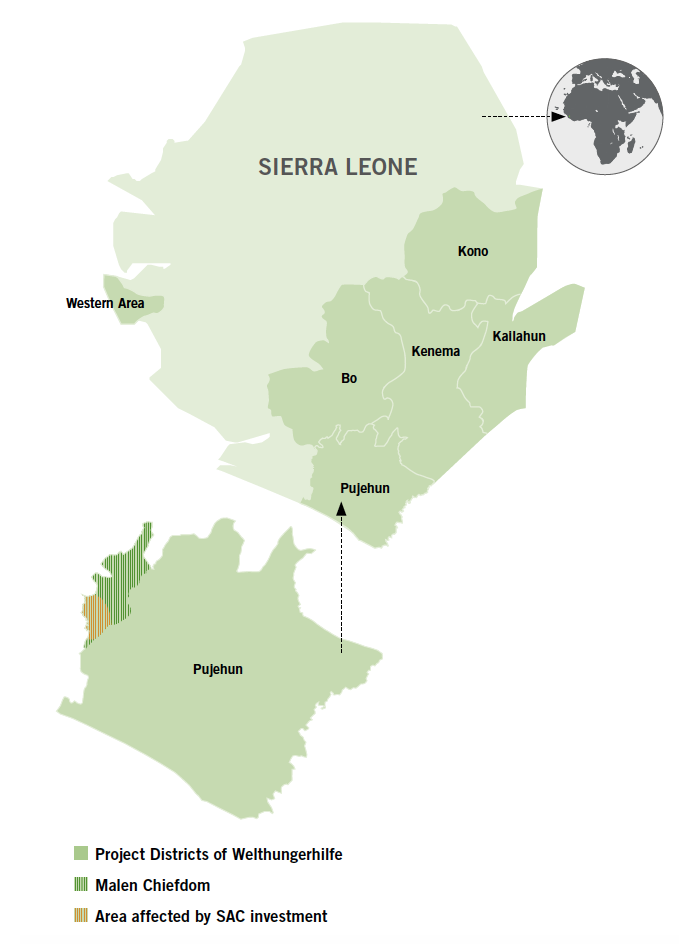 Source: Welthuhungerhilfe/Green Scenery based on official maps.
Source: Welthuhungerhilfe/Green Scenery based on official maps.
Since emerging from a civil war that lasted from 1991 to 2002, Sierra Leone has been working to overcome severe poverty and food insecurity. In spite of those efforts, the level of food insecurity remains alarming (the country’s 2012 GHI score is 24.7). Domestic production of a range of food items falls short of local demand and — in contrast to the decades before the war — Sierra Leone is a net importer of food.
At the same time, 50–60 percent of the population depends on farming for its livelihood. These are mostly small-scale, peasant farmers who rely on the bush fallow system, in which fields are cultivated for a few years until soil fertility is depleted and then left fallow for 10 to 15 years.
Vast Lands Available for Smallholders as well as for Large-scale Foreign Investment?
To deal with low productivity and food insecurity, the government of Sierra Leone is promoting agricultural modernization by means of mechanization and commercialization. In 2010, a five-year US$400 million Smallholder Commercialisation Programme (SCP) was launched with the aim of linking smallholders to markets and commercial value chains. A new emphasis on large-scale, commercial agriculture has also emerged, with the government campaigning to attract foreign direct investment in agriculture. Investment delegations from China and elsewhere were received by the president; trade and investment forums were held in London and Freetown in 2009 and 2011 respectively; and the Sierra Leone Investment and Export Promotion Agency (SLIEPA), supported by the European Union and other donor funding, promises investors “easy access to land with smooth facilitation process” (SLIEPA 2012a).
SLIEPA argues that there are vast areas of available land with “only 15 percent of the country’s 5.4 million hectares of cultivatable land being farmed as recently as 2003” (SLIEPA 2012b). These figures contrast with a study by the German Ministry of Economic Cooperation and Development (BMZ) indicating that much of the land is already overused and little room exists for agricultural expansion (Bald and Schroeder 2011).
The “Big Push” — For Whose Benefit?
Between 2008 and mid-2012, almost 1 million hectares of farmland across the country were leased or under negotiation for lease. Investors are predominantly interested in oil palm, sugarcane, and food crops such as rice — evidence of the extent to which land acquisitions are driven particularly by the food and fuel crises. Most of the projects are export oriented, and at least one investor — the Swiss-based Addax Bioenergy, leasing 44,000 hectares in the northern Bombali District of Sierra Leone for the production of sugarcane — aims to produce ethanol for export to the European Union and to sell electricity from the byproducts in Sierra Leone (Anane and Abiwu 2011).
Although investors are looking to satisfy consumption needs in the global North, it is argued that large-scale foreign direct investment in agriculture can also have benefits for the local population (see, for example, World Bank 2011a). The following case study by Welthungerhilfe and the Sierra Leonean nongovernmental organization Green Scenery takes a closer look at the reality behind the rhetoric and the impact of large-scale land investments on the food and livelihood security of the rural poor in Sierra Leone.
Case Study: SAC investment in Malen Chiefdom, Pujehun District
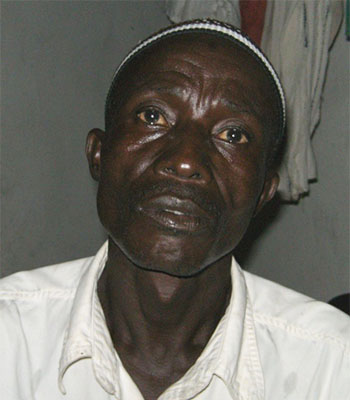
S. J.,
Sinjo village, Malen Chiefdom, Sierra Leone
Today I have a quarter of what I used to have. The food situation is far worse than before because there is no more farming. We used to eat two times a day; now we eat only once a day and we have to buy everything. I paid 200,000 SLL to the Socfin [SAC] foreman for my four children to get employment. I told them [my children] I am going through challenges and that they have to work; four sons work now for the company. One son I have taken out of school to work in the plantations instead.
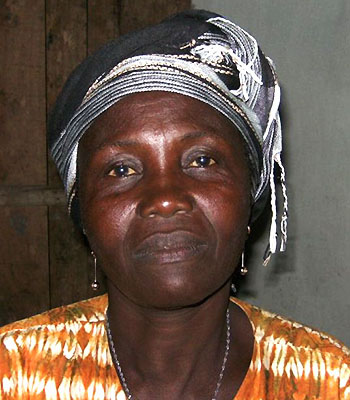
Betty Sengeh,
Sinjo village, Malen Chiefdom, Sierra Leone
Sometimes our family has to take credit or a loan; currently our debts amount to 1,100,000 SLL. Out of this, 200,000 SLL are food debts. It is the first time that we have had food debts. For the past two months I have not been able to pay back any debt because my children who work with the company were inadequately paid. We expected annual payments for the plantations we owned, but this did not materialize. I was employed by Socfin, but then I got sick and had to stop. Previously I used to work on our own farmland, now I am just sitting at home.… For the short term, I do not see any benefit in this development. For the long term, I don’t know. I have little understanding of what they want to achieve. If I do get that understanding, it may help me to determine whether there is future benefit. We don’t understand much, because we see how the chief, the company, and the authorities are more together than they are with us.
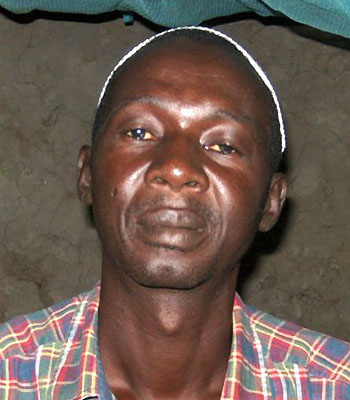
Sama Amara,
Kortumahun village, Malen Chiefdom, Sierra Leone
The resources we had from the plantations are depleted. For example, cassava and rice were available all year round. I used to store palm oil and groundnuts throughout the year and would sell some whenever food was needed.… Today, our family consumes 8 cups of rice a day; previously we used to eat 20 cups. Still we try to eat two times a day.
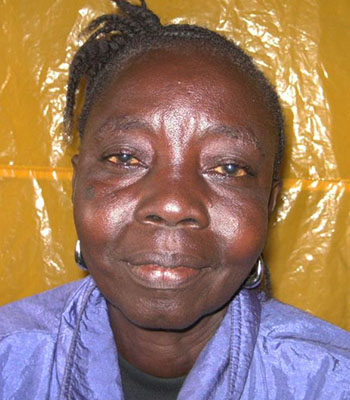
Memai Charles,
Kortumahun village, Malen Chiefdom, Sierra Leone
There is no alternative to earn a living. If there were an alternative, I would not be working with Socfin [SAC]. When I was farming independently, I could decide how much I would eat and how much I would sell. This was good. Now, I am constricted with a small amount of money, and I have to buy everything. It is pretty difficult now, because all things are being measured. When we did our farming there was no need to measure. And the cost of living is increasing.
Welthungerhilfe had been working in Pujehun District since 2007, engaging with smallholder farmers to rehabilitate rural infrastructure, increase incomes, and foster food security through efficient and environmentally safe use of available natural resources. In 2011 Socfin Agricultural Company Sierra Leone Ltd (SAC) — a subsidiary of the corporation Socfin registered in Luxemburg — leased 6,500 hectares of land in the area to grow oil palm and rubber for export. The lease covers approximately one-quarter of the area of Malen Chiefdom and includes 24 villages (see map above). It is effective for 50 years, with the possibility of extension for another 21 years.
As a direct result of this lease agreement, smallholder farmers no longer have access to agricultural land and forested areas, and most project activities that Welthungerhilfe had undertaken in partnership with local farmers have had to stop. In this case, as in many others, there are two major concerns relating to the land deal: the way in which the acquisition is decided upon and the impact on local food and livelihood security (Anseeuw et al. 2012b).
“There was never a chance to say ‘no’ to the land deal; we felt coerced.”
Rural land in Sierra Leone is held by landowning families, with a chieftaincy structure that plays a significant administrative and custodial role. There exists a strong, pervasive notion of the fundamental inalienability of land from the landowning extended families and chiefdoms.
Thus, traditionally land is not leased but allocated. Statutory law, however, provides a procedure for non-natives to acquire leaseholds, requiring the consent of both the chiefdom and local councils. Investors can either lease land directly from the landowners or sublease from the government as the primary leaseholder.
In Malen Chiefdom, the SAC investment was presented as a far smaller deal than was actually the case. Local landowners and users were informed only after the decision had been made by the tribal authorities and were told to thumb print or sign without knowing or understanding the details of the agreement. Indeed, it was a full three months after the contract had been signed that it was fully read out publicly with ad hoc translation into the local language (see Box 4.1 below).
The land lease rent, amounting to US$5 per acre (US$12.50 per hectare) per year, was fixed by the government rather than negotiated with farmers. Landowners receive only 50 percent of the yearly lease payment, while the other half is divided between the different levels of government administration (the district and the chiefdom each receive 20 percent, and the national government receives 10 percent).
At the time the agreement was concluded, some villages, hoping for new employment and education opportunities, accepted the terms imposed. The anticipated opportunities, however, did not materialize. By August 2011, two more villages that had been more favourable toward the deal initially, had become critical.
“We used to have far more food.”
In times gone by, Malen Chiefdom was a farming society with a considerable degree of self-sufficiency. Today, it is a quasi-landless society dependent on uncertain and irregular demand for labor and suffering all the anxiety and uncertainty that comes with such dependency.
When SAC took over the land, farmers received a one-time payment amounting to 1 million leones (SLL) (approximately US$220) for every acre of oil palm plantation lost. No compensation was offered for other crops. This amount is relatively small compared with the annual income farmers would otherwise have earned — income that many families used to pay to send their children to school.
In the smallholder cultivation system, each family member contributed to the farm’s success. Today, the large-scale plantation requires less labor, and former farm households must rely on the income of individual family members. Jobs are largely casual, and labor is recruited on a day-to-day basis. While the plantation attracts a lot of laborers from outside the area, no provision is made for the employment of those women and men who have leased their land.
Although payment levels at the plantations are in accordance with similar investment projects in Sierra Leone, a daily wage of US$2.20 (SLL 10,000) is insufficient to cover the food needs of a family, especially in view of rising consumer prices. Between May 2011 and May 2012, market prices for food in the region affected by the large-scale land acquisitions have risen by 27 percent, on average (see Table 4.1).
As the level of self-sufficiency falls and the price of food rises, access to sufficient food is becoming an issue of concern for many. All those interviewed in May 2012 cited a fall in both the quantity and quality of food available to them since the SAC deal. In particular, interviewees said that they consume less meat since bush meat is much harder to find following the clearing of forested areas for the SAC plantation.
The conversion of former agricultural areas and bush land into plantations has had other serious consequences. People are increasingly concerned about the loss of firewood (the primary source of domestic energy, as in most of Sub-Saharan Africa; and more difficult access to herbal medicines.
Box 4.1
TIMELINE OF THE INVESTMENT OF SOCFIN AGRICULTURAL COMPANY SIERRA LEONE LTD. (SAC) IN MALEN CHIEFDOM
2009
Feasibility study was conducted in the area (involving, for example, soil samples and surveying). The general population was not informed.
September 2010
At a chiefdom meeting in Sahn Malen, the paramount chief informed representatives of the local communities that a company would come and take over the former government plantation.
February 2011
At a chiefdom meeting in Sahn Malen, the paramount chief informed community representatives that all the land in the chiefdom would be taken over by SAC to plant oil palm and rubber. Malen landowners expressed unwillingness to lease land.
February/March 2011
Village chief of Semabu held meeting. The community expressed concern about what would happen to their plantations and food production. Paramount Chief (PC) said that all land would be taken by the company, with or without consent. When people asked where to get food, the PC said they should buy it using the money that they receive.
March 5, 2011
At a chiefdom meeting in Sahn Malen, the lease agreement was to be signed. Armed police were present. Village chiefs who signed got money to redistribute to the landowning families in their village. Villagers and village chiefs who did not want to sign kept away from the meeting. According to the lease agreement only five of the nine sections of Malen signed.
From April 2011 onward
Farmers’ oil palm plantations were measured to determine compensation. Existing oil palm plantations were cleared. Operations in nursery started. Infrastructure was prepared.
May 30, 2011
At a stakeholder meeting in Pujehun, the conflicting parties reconciled and expressed their intention to work together for the wellbeing of the people.
June 4, 2011
At a chiefdom meeting in Sahn Malen, the contract was fully read publically for the first time and partly translated into the local language Mende. The legality of the contract was questioned.
October 2011
Concerned landowners published a statement detailing their grievances (Malen Land Owners Association, “Grievances of Land Owners in Malen Chiefdom,” letter to district officer of Pujehun District, October 2, 2011, accessible at www.greenscenery.org). More than 100 landowners blocked access to the area leased by SAC. Forty were arrested; 15 were charged on counts of riotous conduct, conspiracy, and threatening language.
Source: Melbach (2012).
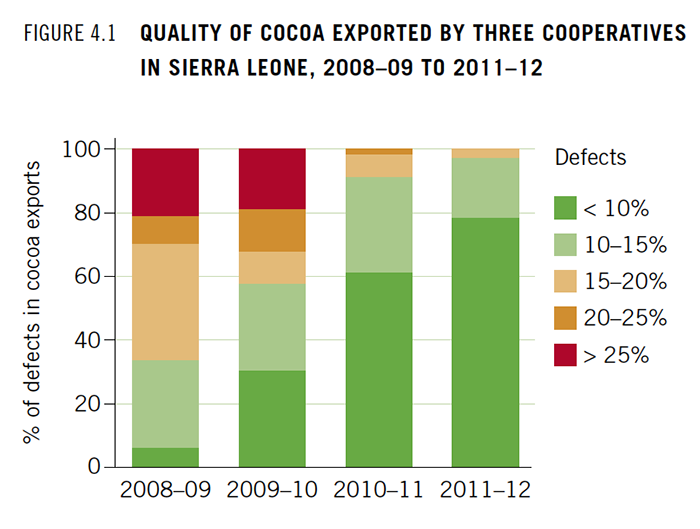 Note: High-quality cocoa has less than 10 percent defects. The share of high-quality cocoa rose from less than 10 percent of country exports in 2008–09 to more than 75 percent in 2011–12. Source: Welthungerhilfe Project in cooperation with a distributor.
Note: High-quality cocoa has less than 10 percent defects. The share of high-quality cocoa rose from less than 10 percent of country exports in 2008–09 to more than 75 percent in 2011–12. Source: Welthungerhilfe Project in cooperation with a distributor.
Promoting dialogue about alternative forms of investment
National governments are responsible for respecting and protecting their citizens’ right to adequate food. In many settings, however, the voices of those who caution against misguided developments that threaten food security are marginalized. It is essential in these cases to support the efforts of civil society organizations to engage their own government representatives in a dialogue about the observed consequences of policy decisions.
To collect evidence about the impacts of the SAC investment in Pujehun, Welthungerhilfe and Green Scenery have assisted in setting up a community-based monitoring system and are supporting the local population in Malen Chiefdom in assessing longer-term livelihood changes. At the time of writing, Green Scenery is setting up a database to register all large-scale land acquisitions in Sierra Leone as part of a larger initiative with other civil society organizations to increase transparency of largescale investment deals. The information collected will be used to engage with national-level politicians and the national media about the consequences of large-scale land deals. This initiative and many more aim to raise awareness about the risks of large-scale foreign direct land investments and to promote alternative models of agricultural investment.
In eastern Sierra Leone, smallholder cocoa and coffee farmers face similar constraints as those observed in Pujehun and elsewhere in rural Sierra Leone. Yields are low because of the reliance on low productivity varieties and techniques, as well as the advanced age of many trees. Because of poor quality, farmers are paid low prices by middlemen. They lack incentives to invest in proper harvesting, fermenting, drying, or marketing, and many are tied into a credit system that maintains the status quo.
While policies are clearly formulated at the national level, the role and functions of the local government in terms of rural development are not yet well understood or implemented. The introduction of farmer field schools under the Smallholder Commercialisation Programme, for example, has yet to reach the majority of households. The cocoa sector is neglected in terms of extension services, and cocoa exports have remained stagnant for many years, far below their pre-war levels.
Against this backdrop, the experiences of Welthungerhilfe in Sierra Leone show that—with adequate support—smallholder agriculture has commercial potential that goes beyond increasing food availability in local and regional markets.
Supported by the European Commission, Welthungerhilfe, the Agro Eco Louis Bok Institute, and the Deutsche Gesellschaft für Internationale Zusammenarbeit (GIZ) have worked with three national cooperatives “to improve income and well-being of farm families through improved production and marketing of cocoa and coffee” in eastern Sierra Leone. This work, which began in 2007, has involved approximately 10,000 small-scale producers cultivating an average farm size of 2.4 hectares. It has shown that substantial improvements in both quantity and quality are possible, even in contexts where production is “atomized” among thousands of smallholders.
Between 2007 and 2009, average household income from coffee and cocoa increased by 81 percent (US$190), and 15 percent of this increase can be attributed directly to the project (comparing prices in project and nonproject villages). The quality of the cocoa exported through the three project cooperatives has also improved considerably (see Figure 4.1).
The above data demonstrates the economic potential of smallholders. With appropriate and adequate support and inexpensive training methods such as farmer field schools, small-scale producers can overcome constraints along the value chain while maintaining the diverse and sustainable structures of the cocoa agroforestry systems. However, the up-scaling and sustainability of such successes rely to a large extent on the vision of “agricultural modernization” promoted by the government of Sierra Leone and the priority and support given to smallholders in that vision.
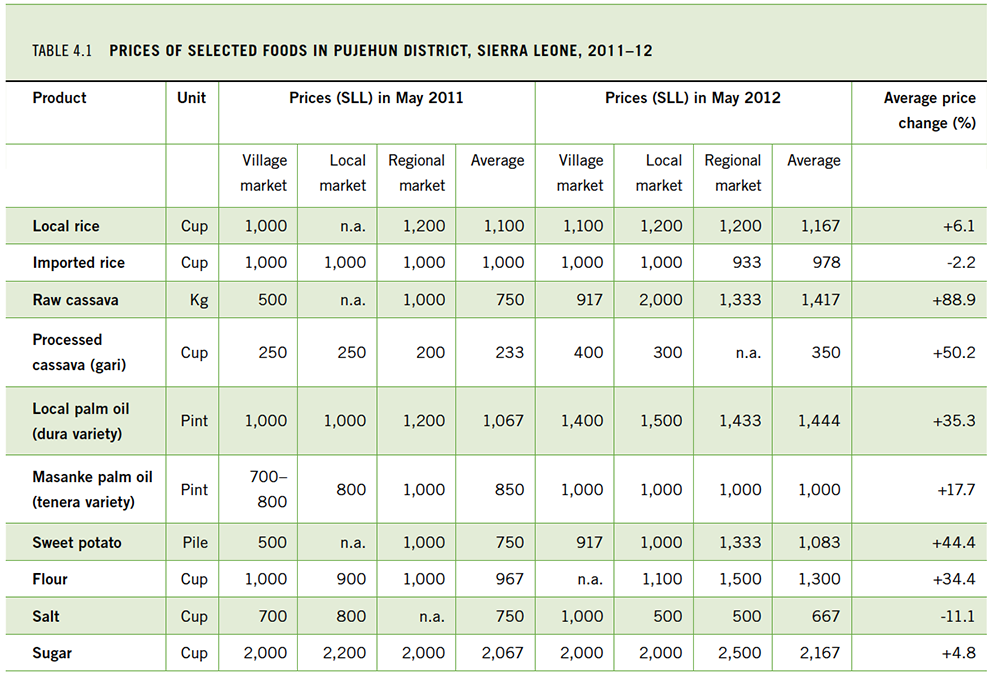 Note: n.a. = not available. Source: Prices were recorded by Welthungerhilfe project staff. However, village-level prices were taken in different locations within the region affected by the lease in 2011 and 2012. The inflation rate of 2011 was 18.5 percent and is estimated to decline to 8.5 percent in 2012 (World Bank 2011a).
Note: n.a. = not available. Source: Prices were recorded by Welthungerhilfe project staff. However, village-level prices were taken in different locations within the region affected by the lease in 2011 and 2012. The inflation rate of 2011 was 18.5 percent and is estimated to decline to 8.5 percent in 2012 (World Bank 2011a).
Footnotes
- The program has a planned budget of US$403 million. However, as of July 2012 the SCP had been accorded US$50 million from the multi-donor Global Agriculture and Food Security Program (GAFSP), administered by the World Bank. Furthermore, the Islamic Development Bank had announced a contribution of US$20 million. A number of other programs, with a joint volume of US$83 million, are understood as forming part of the SCP because they support some of the program’s components (the World Bank’s Rural Private Sector Program, the African Development Bank’s Agricultural Rehabilitation Program, and the Rural Finance and Community Improvement Program and Community-Based Poverty Reduction Project of the International Fund for Agricultural Development).
- These monitoring data are from the Sierra Leonean non-governmental organization Green Scenery.
- In August 2011 Welthungerhilfe commissioned an independent case study to get a better insight into the perspectives of local farmers on the deal and to understand the early impacts of the land acquisition. The full study can be accessed through Welthungerhilfe’s webpage (Melbach 2012).